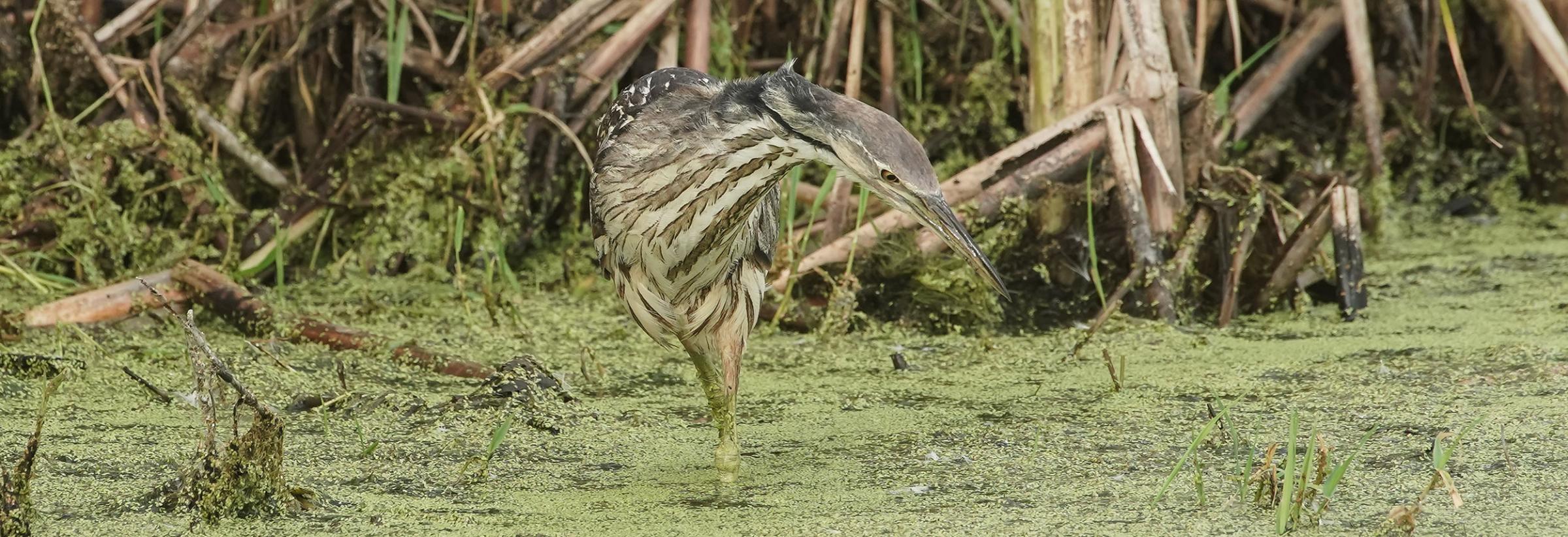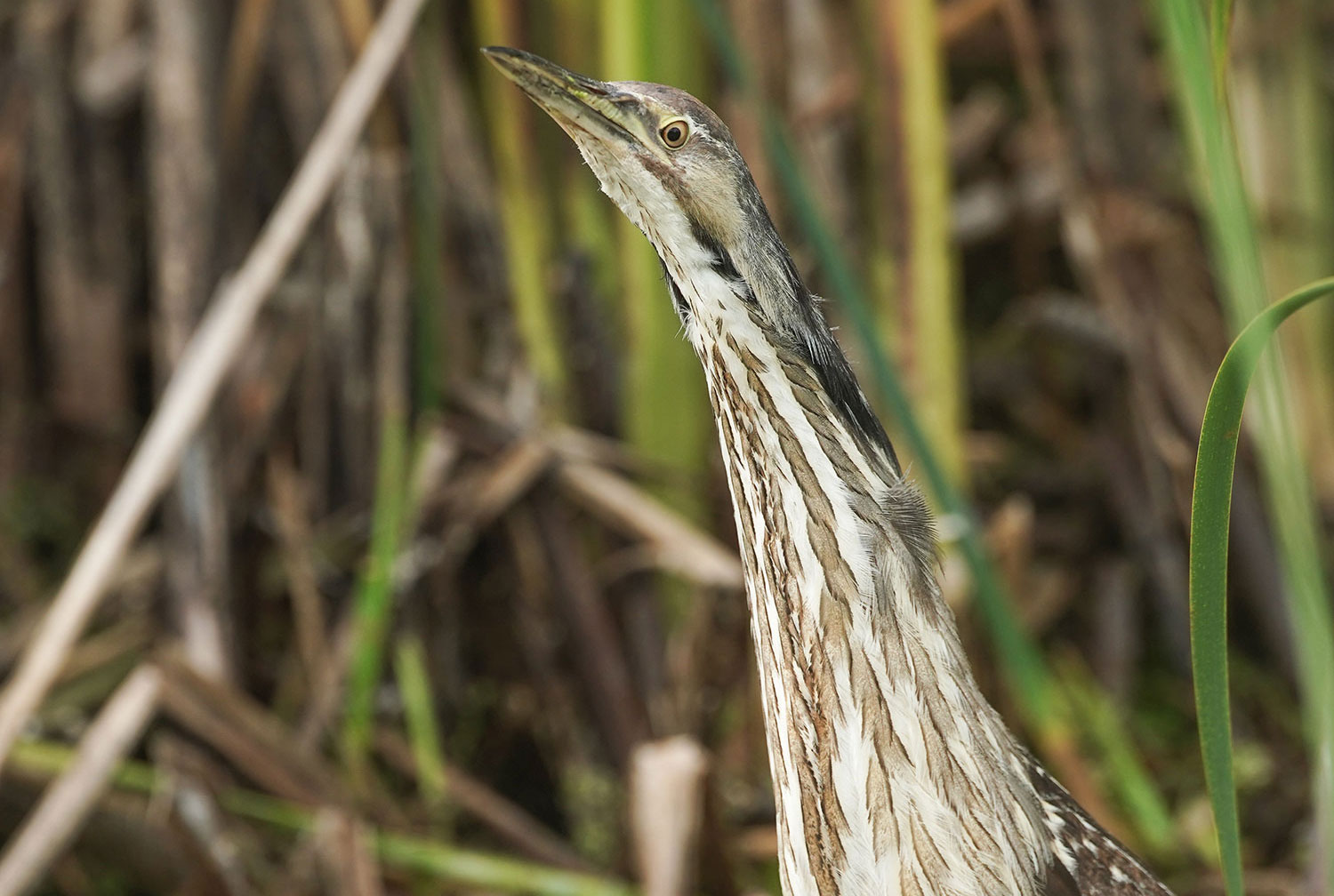
In an attempt to thwart potential threats, the American bittern strikes a pose: outstretched neck, bill pointing up, and feathers flatten against the body. Freezing in place, combined with its striping feathers, help it disappear among the vegetation.
Regardless of the subject, more times than not, early morning starts are a given. Capturing an America bittern portrait is no different.
Summer of 2020 provided abundant wetland options for many living things, the American bittern being one of them. The trick was finding one, which I quickly learned, was more of a right place, right time scenario.
On a combined fourth attempt in search of a marshy area likely entertaining bitterns, Mike Anderson, Game and Fish Department video project supervisor, and I ventured northeast of Bismarck where he’d last spotted one of these medium-sized herons. You may or may not be familiar with the “American Bittern” video program the Department produced last fall. This written piece is the behind-the-scenes photo edition of how we captured the video for that story.
As the first rays of light began reflecting soft sky colors in the many patches of standing water, our eyes darted in and out of the ditches, hoping to catch a little patch of something that didn’t quite belong.
At least, that was my plan.
I’d mostly seen photos and video of this bird, and once very briefly in the wild. So, I was surprised when we stumbled upon a bird about an hour into our drive. Starting from afar, I pulled out my camera and quickly snapped a few photos, recorded a few seconds of video, and held still. I expected the bittern to spook and fly away at any moment.
Nope, not this fella.
Not only was the bittern preoccupied with its search for breakfast, but it also seemed to care less about having an audience. In fact, at one point, this bittern became so comfortable with our vehicle, it wiggled-waddled up the bank to within 6 feet of us. My lack of experience and research on this bird briefly gave me cause for concern: how bold is this bird? Was it coming to give me a piece of its mind about its portrait session?
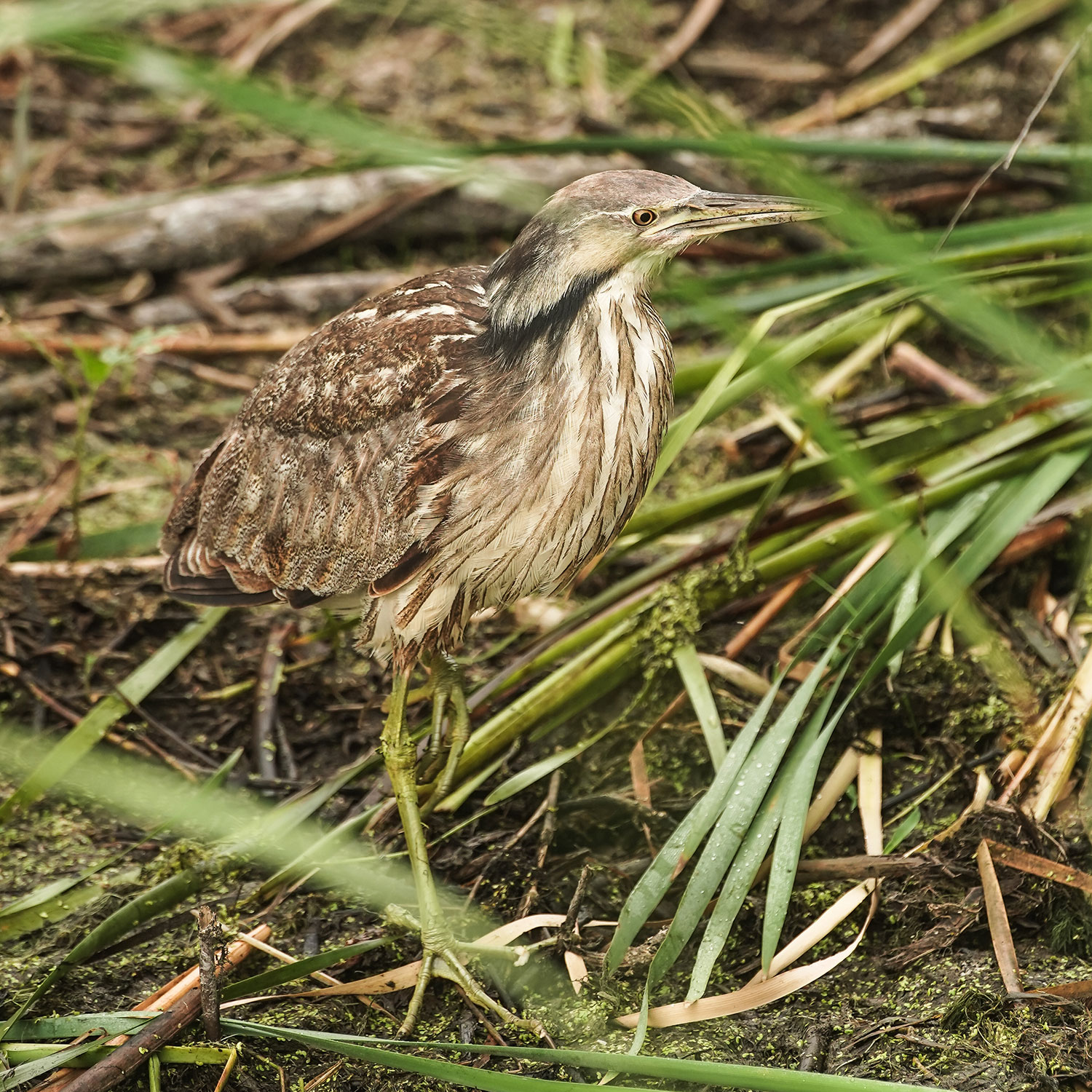
American bitterns can be found in freshwater marshes, typically along the edge of reed growth. While it's uncommon to find a bittern out in the open, this particular fella not only ventured away from his hiding place, but came within a few feet of our vehicle.
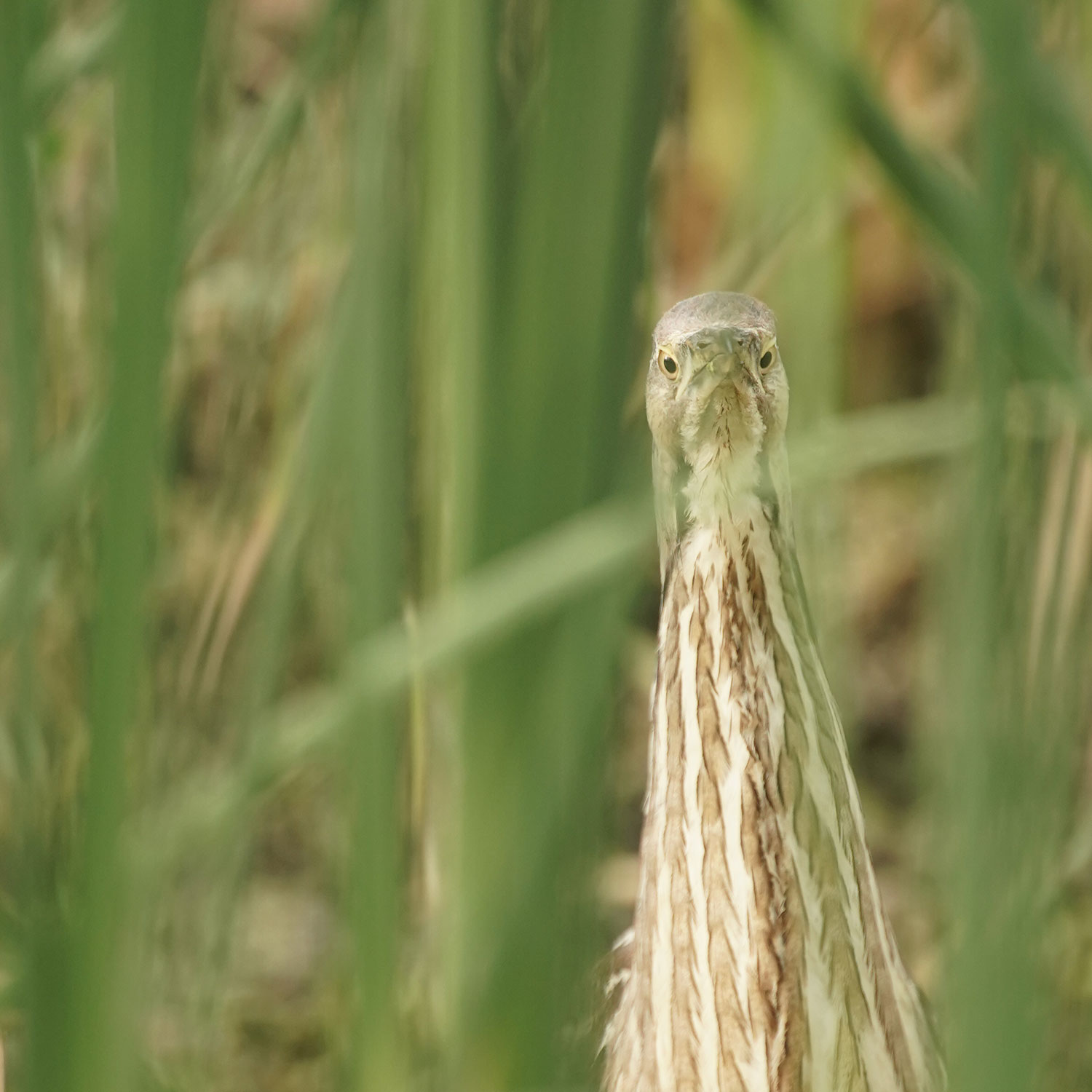
The American bittern's yellow eyes have the ability to focus downward, rendering a comical expression when viewed straight on.
Nope. Turns out, it spotted a grasshopper and made a meal of it. I will admit, I was so shocked, I forgot to hit the shutter button. Sometimes, when you experience a new wildlife encounter such as this, you just stop and watch.
We observed this bird stalking its prey, darting in and out of the vegetation like a ninja and “hiding” in plain sight. By the way, when a bittern thinks its hiding, it will stand very still, raise its head tall to stretch out its neck, using its dark- and light-patterned feathers to camouflage with its surroundings. While this maneuver does work, it’s just less effective when standing in the middle of marshy water, several feet away from any cover.
Mike and I watched this bird over the course of two hours. Content with a variety of photos and video and the bittern’s ultimate cooperation, we continued on our way.
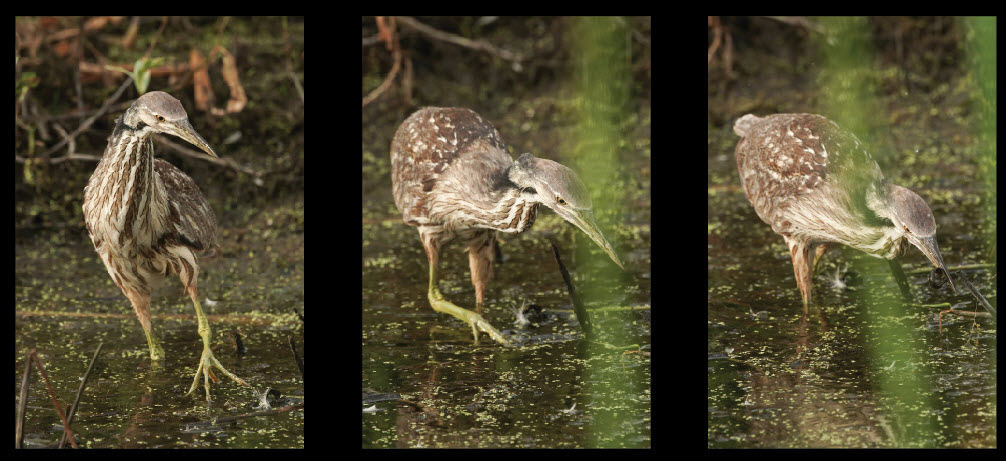
Patience and very slow, deliberate movements aid these birds in stalking their prey, up to the striking moment.
